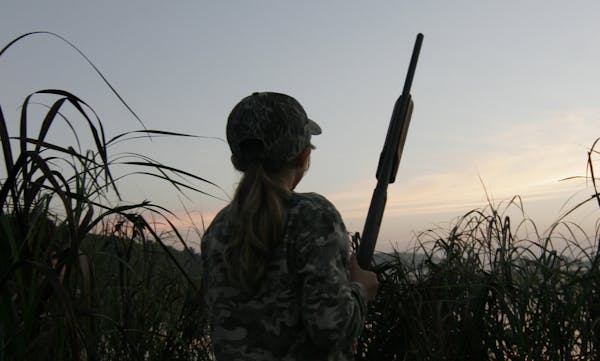Minnesota pheasant hunters finally got some good news: The state's pheasant index is up 33 percent from last year, a substantial boost in a population that has been hurt by declining habitat and cold, wet nesting seasons.
Now the question is whether that increase will trigger more hunters to return to fields. Their numbers have dwindled in recent years.
"The pheasant population really drives how many hunters take to the field, and my guess is we'll see an increase,'' said Anthony Hauck of Pheasants Forever. "There should be good hunting in some places.''
Last year, the state's pheasant index — determined by an annual August roadside count — was 29 birds per 100 miles. This year, it increased to 41 birds per 100 miles.
"I'd say that's significant,'' said Nicole Davros, DNR wildlife research scientist who conduced the survey. "I think it will be a good fall. We should have a higher harvest than last year.''
The DNR has been reluctant to predict pheasant harvest based on the pheasant index, because predictions have missed the mark in recent years, Davros said, partly because hunter numbers have declined.
That said, hunters could bag around 220,000 roosters this fall, she said. That would be a significant increase from last year, when hunters harvested an estimated 152,800 roosters, the lowest in 30 years and less than half the number killed just four years earlier. One reason for the low harvest was the number of pheasant hunters last year, 57,590, was the lowest in nearly 40 years and the second lowest since records started in 1960.
It also was less than half the number of ringneck hunters the DNR estimated just seven years earlier.
Those numbers are based on the DNR's annual survey of small-game hunters. But that survey likely undercounts pheasant hunters because the DNR sold 70,406 state pheasant stamps last year. Still, that's the lowest since stamp sales began in 1983, and it's a decline of nearly 34,000 in just four years.
"This a trend a lot of states are dealing with,'' Davros said.
She said the decline in hunter numbers could at least be partly attributed to a late fall harvest last year, which meant tough early-season ringneck hunting.
Weather, habitat
The pheasant population was helped by the relatively mild winter and not-too-wet spring nesting weather, Davros said.
"We had some wet, cold weather in May, which forced some birds to renest,'' she said. Heavier rains came in June and July, but the temperatures were warm, which prevented chick deaths.
"That's not to say we didn't lose some broods to rain, but overall the conditions were good,'' she said. The highest pheasant counts were in the southwest, west-central and east-central regions.
Said Hauck: "When weather and habitat conditions break right for pheasants, they can double and triple populations in short order. The population in the whole pheasant range [including South Dakota] is up this year. That's good news if you're a bird hunter — and good news has been hard to find in recent years.''
Loss of habitat remains a major concern for ringneck lovers. Minnesota lost 153,000 acres enrolled in the federal Conservation Reserve Program (CRP) over the past year, though only 23,000 acres of that occurred in the pheasant range And that loss was offset by the addition of other public grasslands. The result: The pheasant region saw a net loss of about 4,300 acres, or 6 square miles of habitat.
But the state could lose up to 102,000 CRP acres this fall and nearly 89,000 next year.
The loss of nesting habitat is the primary reason for the steady decline in Minnesota's pheasant harvest since the mid-2000s, Davros said.
"The future trend for pheasants and all grassland-dependent wildlife does not look good unless we can find ways to keep habitat on the ground,'' she said.
Meanwhile, a long-awaited and ambitious plan to restore the state's pheasant population is expected to be released next week. The plan springs from the state's first-ever pheasant summit held last December in Marshall, attended by about 300 people. Gov. Mark Dayton called the gathering in response to declining pheasant habitat, a plunging ringneck population and a precipitous drop in the number of pheasant hunters.
A draft plan released earlier in the summer called for 10 actions, including boosting the number and quality of large blocks of grasslands.
Minnesota's pheasant season opens Oct. 10 and runs through Jan. 3.
Doug Smith • doug.smith@startribune.com
Canadian Taylor Pendrith leads the 3M Open in pursuit of his 2nd victory of the year
Reliever Ryne Stanek acquired by Mets from Mariners for minor league outfielder Rhylan Thomas
Singing, ceremonies and straw hats: Olympics opening ceremony in Tahiti centers Polynesian culture
Latest tests show Seine water quality was substandard when Paris mayor took a dip


